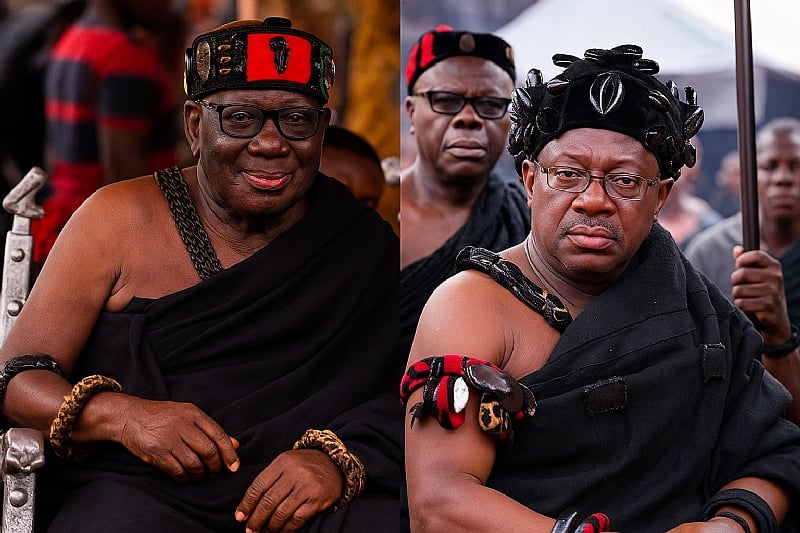The Great Migration of the Akan People in the 15th and 16th centuries marked a significant movement from the Adansi and Amanseɛ regions, driven by the search for fertile land and new settlement opportunities. Among these groups were the Bretuo clans, notably led by Baafoɔ Antiedu, while his brother, Ampon Agyei Kwafo, led the Etena Bretuo faction.
Upon reaching Tokwaboɔho, near present-day Afigyase (also known as Efiduase), the brothers faced a crucial decision in their journey. Ampon Agyei chose to turn right, a pivotal choice that ultimately led to the separation of the two branches of the Etena Bretuo family. This deviation found Ampon Agyei navigating the dense and challenging terrains of the River Afram, which spans the area now referred to as the Afram Plains. With determination, he established the town of Abene atop the Kwawu Mountains, where he became Chief, making Abene the Ahenkro and the ceremonial seat of Kwawuman. As the guiding figure of Abene, the Chief holds the esteemed title of Kwawumanhene and is recognized as a vital leader within the Etena Bretuo Abusua, the royal lineage of Kwawu.
On the other hand, Baafoɔ Antiedu, after veering left with his Bretuo followers, went on to found Akrofoso and Kodiekrom. Among his descendants, one of the most revered rulers was Amanin Ampon, affectionately known as Amaniampon. His lineage continued to lead the community with notable figures like Ɔsɛe Adu Boahen Anantuo and Akuamoa Boaten Panin, who significantly shaped the governance of the area. Following them, Atakora Panin took leadership and is credited with the important transition of the Ahenkro from Akrofoso to a newly established settlement named Manpon. While this relocation began during the reign of Boahen Anantuo, it was Atakora Panin who completed this pivotal shift.
Nestled among the majestic Kwawu Scarp, the town of Manpon is characterized by its breathtaking mountain surroundings, offering both a natural barrier and a sense of sanctuary.
Importantly, the cultural practices of these communities allow for a Bretuo Royal from Manpon to contest the Abene Stool, thus enabling them to assume the prestigious title of Kwawumanhene. Similarly, an Etena Royal from Abene has the right to compete for the Manpon Stool and become the Manponmanhene.
To foster unity among these lineage groups, it is essential to dispel divisive narratives, such as “Asantenii wants to serve as Kwawumanhene,” and vice versa, and instead encourage the understanding that Abrewa nim ne mma ne ne nananom.
The Proud Asante Traditionalist.


